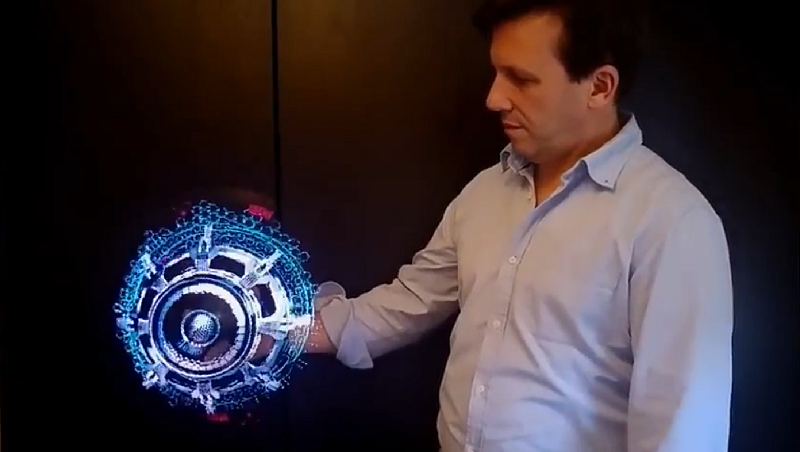Holograms have reached the homes, or at least a substitute. But they are quite spectacular, and offer many possibilities.
For a little over a year, Chinese gift and technology stores have been flooded with holographic fans, also known as holographic fans or holographic helixes. They are quite spectacular, and not very expensive. But some can be dangerous. How do they work? Interested in learning more? Read on!
They are called fans with a hologram, but they are not really fans in the classical sense of the word, i.e. they do not cool. The fan is used to spin LED lights that create the hologram effect.
As is always the case, dozens of clone brands have appeared due to their success, and you should be careful with some of them, because these holographic fans can be dangerous, especially for children and pets.
What Is a Holographic Fan?
These devices have blades that rotate, like fans. Along the length of the blade is a strip of LED lights, which can include over 200 lights, depending on the size.
The operating system is very curious, and there is a lot of technology behind it. The blade that contains the LED lights starts spinning at a diabolical speed, up to 750 revolutions per minute. This is something very remarkable in propellers that are sometimes more than a meter long.
A processor reads a video file or an animation, and it is synchronized with the speed of rotation of the blades, so that the LED lights, which are projected 20 or 30 centimeters ahead, generate a moving image.
The viewer has the impression of seeing a hologram, because the image floats in the air, although technically it is not the case, because it is not an image with a volume. But if you project a computer-generated 3D image, you really get the impression that it has volume. The effect is quite dramatic.
From there, there are many variations. The most advanced ones have 5 or 6 blades that are coordinated with each other, to generate more light. Others have two LED propellers, one in the opposite direction of the other, to create a true 3D effect.
The device itself has a microSD card reader, so you can add your own videos and messages. An application allows you to control from your mobile the video you want to see, the intensity of the light and colors, special effects, etc.
As you may have guessed, the danger of these devices lies in the fact that the blades turn very fast and have no protection. If someone accidentally touches them, especially a child or a pet, they can do a lot of damage. That’s why some are sold with a clear plastic guard inside.
In addition to setting the scene in a room, playroom, party, etc., they have many advertising and commercial applications.
These holographic fans or holographic propellers are easy to find. For example, you can find them on Amazon with prices starting from 89 euros.
The First Home Hologram Printer in the World
An old childhood dream is coming true. You can now print your own holograms at home. And they are spectacular!
For many people, the first contact with holograms was the legendary scene in Star Wars in which Princess Leia appears, asking Obiwan for help. “You are my only hope! “. It took 40 years for this technology to arrive in homes, but here it is: the LitiHolo 3D hologram printer, the world’s first home hologram printer.
Its creator, Paul Christie, is an MIT hologram expert fascinated by the technology, but frustrated that it can only be enjoyed by scientists in experimental labs.
So after years of hard work, here is the first affordable home hologram printer, ready to be used at home.
First of all, it should be made clear that we are not talking about 3D projected holograms like those in Star Wars or video games, but a hologram printed on photographic material. This hologram looks like a photograph, but when you move it, the 3D effect is generated inside.
The only thing the LitiHolo 3D hologram printer needs to generate holograms is a 3D image, or a video recorded by moving the camera around the object. It also works with photos taken from different angles.
Holograms can be created using any cell phone or applications such as Sketchfab, which offers more than half a million free 3D images that can be turned into holograms.

